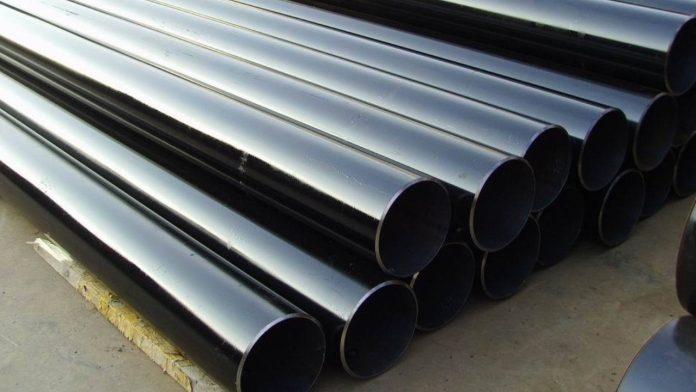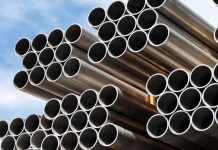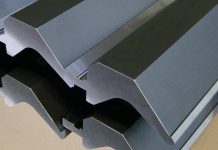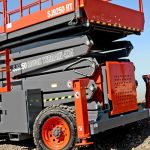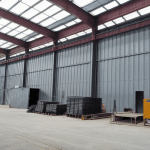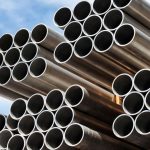In the dynamic domains of modern engineering and architecture, pipelines have transcended their traditional roles, becoming integral to intricate, sustainable, and visually captivating structures. Carbon steel pipes, renowned for their durability and strength, are spearheading this evolutionary shift.
From heightened corrosion resistance to seamless integration with technologies, CS Pipe is not only a conduit but also a versatile component that shapes the very fabric of our modern infrastructure. This article explores the transformative journey of CS pipes to meet the demands of engineering and architectural landscapes.
Challenges and Future Prospects
While CS pipes have made remarkable strides in adapting to modern demands, challenges remain. Ensuring optimal corrosion resistance, advancing smart technology integration, and addressing environmental concerns are ongoing endeavors. However, with continuous research and innovation, carbon steel pipes are poised to play an increasingly crucial role in shaping the future of engineering and architecture.
Innovations in CS Pipe for Modern Engineering and Architecture
In the fast-paced world of infrastructure development, carbon steel pipes have emerged as transformative assets. Let’s explore their cutting-edge adaptations, ensuring unparalleled resilience and versatility in meeting contemporary engineering and architectural demands.
Enhanced Corrosion Resistance
Corrosion can compromise safety and longevity. To combat this, carbon steel pipes have undergone a remarkable transformation. Advanced coatings and linings provide an additional layer of protection against corrosive elements, extending the lifespan of these pipes.
Innovations in alloy composition have resulted in carbon steel grades that exhibit superior corrosion resistance. Real-world applications, such as offshore oil rigs and desalination plants, stand as a testament to the success of these corrosion-resistant adaptations.
High-Strength Solutions
Modern architectural marvels often reach staggering heights and spans. Carbon steel pipes have risen to the challenge by evolving into high-strength solutions. Tailored carbon steel grades offer an impressive strength-to-weight ratio, supporting the structural integrity of skyscrapers and expansive bridges.
Furthermore, their flexibility is harnessed in seismic regions, contributing to enhanced resilience during earthquakes.
Sustainable Manufacturing Practices
In an era of heightened environmental consciousness, sustainable manufacturing practices are a must. Carbon steel pipe manufacturers have responded by embracing eco-friendly production techniques. These encompass efficient energy utilization, and reducing the carbon footprint of production processes.
Additionally, recycling initiatives play a vital role, ensuring that carbon steel pipes remain an environmentally responsible choice for modern projects.
Integrating Smart Technologies
Smart technologies are revolutionizing various industries, and pipelines are no exception. CS pipes are being integrated with sensors for real-time monitoring of their condition. The Internet of Things (IoT) applications enable predictive maintenance, minimizing downtime and potential hazards.
From detecting leaks to assessing structural integrity, these innovations enhance the safety and efficiency of CS pipe networks.
Adaptation to Diverse Fluids and Gases
Transporting an array of substances through pipelines demands adaptability. Carbon steel pipes are engineered to handle diverse fluids and gases, from corrosive chemicals to extreme temperatures.
Their resilience makes them a preferred choice in industries ranging from chemical processing to energy distribution, ensuring safe and efficient conveyance.
Modular Design and Prefabrication
Construction methodologies are advancing, and modular design is gaining traction. CS pipes have seamlessly integrated into this trend. They facilitate modular construction by offering compatibility and ease of assembly.
Prefabrication of pipe systems off-site reduces on-site labor and construction time, resulting in cost savings and expedited project completion.
Contribution to Urban Aesthetics
Beyond functionality, carbon steel pipes contribute to the aesthetics of modern urban architecture. These pipes are no longer concealed but embraced as design elements. Their distinctive appearance adds an industrial, contemporary flair to buildings and public spaces.
Architectural projects around the world have embraced carbon steel pipes as integral components, merging functionality with artistic expression.
Conclusion
Carbon steel pipes have evolved from conventional conduits to versatile and adaptive components. As technology advances and challenges are overcome, carbon steel pipes stand ready to meet the dynamic demands of a rapidly evolving world, serving as pillars of strength and innovation in the realms of engineering and architecture.

